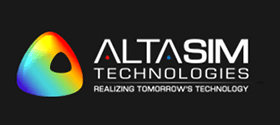Discontinuous Galerkin Method
The significant flexibility of COMSOL Multiphysics represents one of the primary reasons AltaSim uses this software as our main simulation tool. In this installment of our Tips & Tricks, we are going to review the discontinuous Galerkin (DG) method that COMSOL has implemented. AltaSim has found that for the cases described in this article, DG […]
Discontinuous Galerkin Method Read More »
